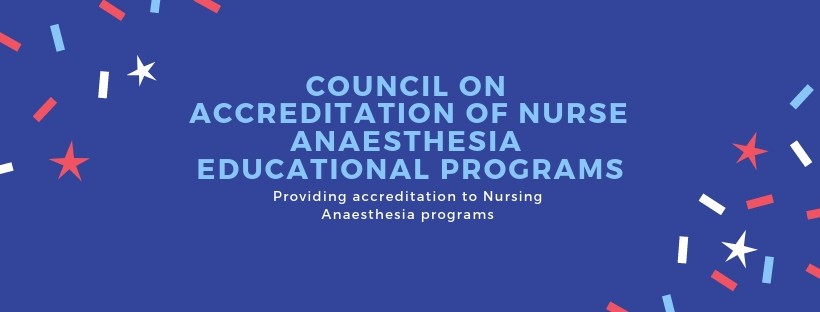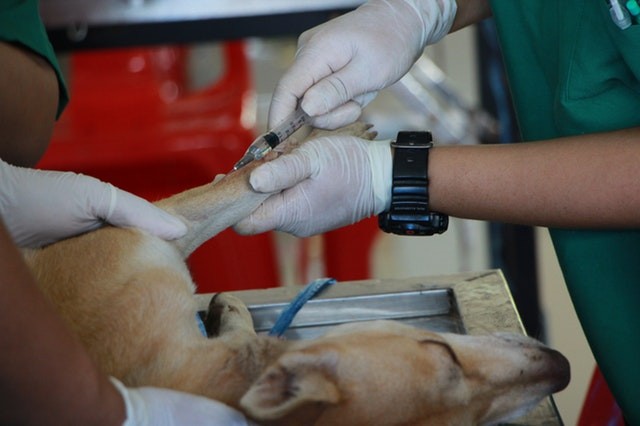Council on Accreditation of Nurse Anesthesia Educational Programs- COA
Council on Nurse Anesthesia Educational Programs accredits institutions with nurse anesthesia programs in accordance with the agency standards. Learn more about COA.
Nursing Anesthesia programs also need to maintain standards in the educational course delivered to students, upon which they become competent professionals in the real world.
What is the Council on Accreditation of Nurse Anesthesia Educational Programs (COA)?
The Council on Accreditation of Nurse Anesthesia Educational Programs (COA) is the main accrediting agency for nurse anesthesia programs in the United States and its territories.
It maintains the educational standards for Nurse Anaesthesia programs which affect the professionals in this domain including certified registered nurse anesthetists, practitioners, and faculty, students, and more.

Standards of COA Accreditation Process
The standards laid down by the COA are subjected to target certain areas which include the following.
-
Governance
-
Resources
-
Program of study
-
Program effectiveness
-
Accountability
The standards laid down for each of the above domain is constantly reviewed and modified by the council from time to time.
Failure to follow the standards for one or more domains can severely affect the accreditation status of an institution.
The process of established programs is based on a self-evaluation study document for the program which is followed by an on-site review team.
 source - pexels.com
source - pexels.com
Eligibility Requirements for COA Accreditation
The eligibility criteria for colleges and educational institutions for COA accreditation include the following.
-
The motto of the formation is to shore up the educational quality of the nurse anesthesia programs.
-
The foundation's panel structure helps to meet program targets and assimilate the general population, pupil, and workforce investment.
-
The resources are enough to cater to the educational requirements of the students of the institution and match the standards laid down by COA.
-
There should be the availability of the optimum amount of resources accessible to a library, clinical spots, and mechanical access.
-
The duration of the educational program should be at least two years long.
-
The curriculum must be appropriate and cover the trending patterns involved in the framework for nursing programs.
-
The program should involve regular innovative and creative work regarding the educational program to promote agility in the learning process.
Steps to seek COA accreditation status
 source - pexels.com
source - pexels.com
To seek accreditation from COA, an educational institute is required to follow a certain procedure. The steps involved are listed below.
-
The initial step in the process for a new Nurse Anesthesia program is for the sponsoring educational body to send a letter of intent with the COA.
-
After the COA accepts the letter of intent, a new program starts an accreditation review process for the respective educational body.
-
Submission of the validity of eligibility.
-
A self-study event for the accreditation ( written explanation of program regarding the way it meets each accreditation criterion with supporting documentation)
-
Payment of required fees.
-
Hosting an on-site review for the accreditation process.
-
The onsite review is done by experienced Nurse Anesthesia Educators who are trained and approved by the COA to serve as an extension of the COA for the process.
Mission of COA
The council’s prime target is to award public recognition to those institutions whose Nurse Anesthesia programs are up to the standards laid down by COA.
These institutions award Post-Masters, Master's Degree, and Doctorate degree programs.
COA assists them by providing essential resources so that they can improve their educational quality.
[Also Read: Best Online Nursing Programs ]

Source - vimeo.com
Guiding Values of COA
The guiding values of COA are given here.
-
To conduct operations to maintain the standard laid down by the organization.
-
To foster the academic work being done in the institutions.
-
Keep refining the standards so that the methodology for these programs keep evolving with time and matches the need of the hour.
-
To promote creativity and innovation in educational programs based on sound educational practices.
-
It should be aware of its responsibilities to its public of interest which goes beyond the student and educational programs running in the institutions.
-
To promote public involvement in decision making related to the academic quality and enhancement of the research work being done in institutions.
Formation Structure of COA
The COA is a group of 13 directors including 6 CRNA educators, 2 CRNA practitioners, 1 hospital administrator, 1 nurse anesthesia student, 1 university administrator, and 2 public members.
The composition of the COA reflects a mix of qualified CRNA educators and CRNA practitioners that is appropriate for rendering accreditation decisions regarding nurse anesthesia educational offerings at the master’s and doctoral degree levels and for the accreditation of Fellowships.
Benefits of COA
COA accreditation of nursing anesthesia programs and courses comes with a lot of advantages and benefits, some of which are mentioned here.
It puts a label of approval on graduates as they are graduating from an accredited institution, which indicates that graduates are expected to be ready to practice at a certain level of professionalism.
COA provides educational programs with opportunities for self-evaluation and with feedback on program content-matter and orientation.
It allows constant enhancement of the quality of these institutions and educational programs being run by them.
Some other benefits are as follows.
-
It helps employers to determine the authenticity of programs of study and whether a graduate is qualified to work in the professional environment.
-
Employers often need strong affirmation that applicants have received a degree from an accredited school or program.
-
Allows graduates to appear for various certification examinations.
-
Generation of goals for institutional enhancement and development of programs.
-
Gives a self-regulatory alternative for institutional oversight functions.
-
Enriches a foundation for determining eligibility for federal monetary assistance.
 source - pexels.com
source - pexels.com
Colleges and Universities under COA Accreditation
The following are the colleges and universities accredited by COA as they fulfill the requirements laid down by the council.
|
Institutions accredited by COA |
|
Conclusion
Just like any other educational program, Nursing Anesthesia programs also need to maintain standards in the educational course delivered to students, upon which they become competent professionals in the real world. The institutions offering these programs must have adequate resources and fulfill the norms laid down by COA. COA is the de-facto organization for accreditation nursing anesthesia programs.
Frequently Asked Questions
1.Does the COA receive complaints or concerns?
On an average, the COA receives one to two formal complaints against nurse anesthesia programs per year. Most frequently, these complaints are related to student dismissals.
2.What information does the COA provide to the public regarding a nurse anesthesia program’s accreditation status?
The COA guarantees that the nursing program abides by its established principles and provides quality education. The COA provides a list of accredited programs and related information such as fees and curriculum. It also gives a report of actions.
3.How are clinical hours defined?
Clinical hours are defined in the Glossary of the 2004 Standards and PDS. Clinical hours include time spent in the actual administration of anesthesia (i.e., anesthesia time) and other time spent in the clinical area.
4.Does the COA have other requirements regarding student time spent in the clinical environment?
In order to support student safety and promote effective student learning, the 2004 Standards and PDS have limited student time commitment to a reasonable number of hours, not exceeding 64 hours per week.
5.What is the composition of the COA?
The COA is composed of 13 directors including 6 CRNA educators, 2 CRNA practitioners, 1 hospital administrator, 1 nurse anesthesia student, 1 university administrator, and 2 public members.
6.What is the COA’s process for revising the standards?
The process for major revision of the standards is described in the 'Standards for Accreditation - Development, Adoption, and Revision' policy in the COA’s Accreditation Policies and Procedures manual.
7.What is the role of the council in regard to the profit margins of nurse anesthesia programs?
The council does not play a role in the profit margins of anesthesia programs. However, it ensures that the institution provides adequate resources for the students.
8.Is CRNA school hard?
CRNA school is extremely difficult but for those who are determined to become CRNAs, it can be done. The CRNA program is very intensive, as it's a graduate level program.